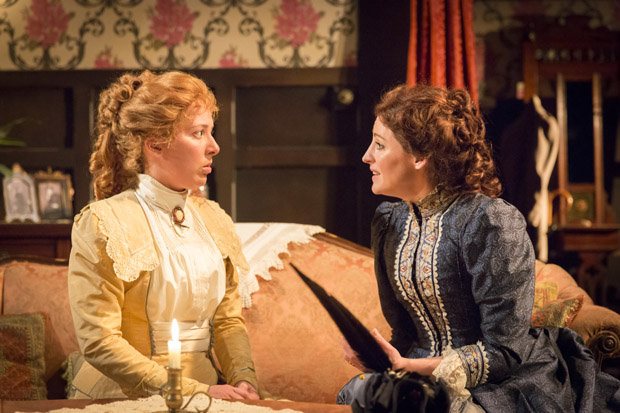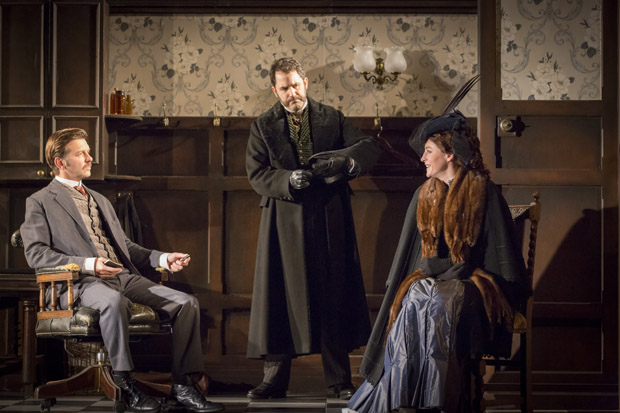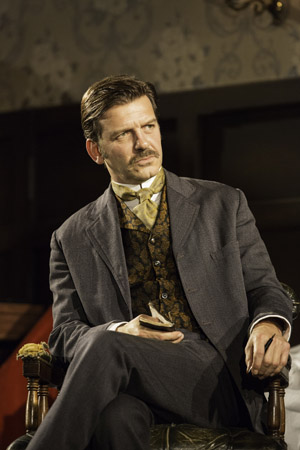Sex sells – which is presumably why Channel 4 commissioners and London theatre producers are serving up countless salacious offerings for our wanton delectation. The latest contribution to this seemingly unceasing, lascivious production line is In the Next Room or The Vibrator Play, now on at the St. James Theatre, after being staged at the Theatre Royal Bath last year.

The play’s narrative revolves around the historical detail that patients suffering from “hysteria” were treated using rudimentary, electronic vibrators. Set in a 19th Century spa town on the outskirts of New York, it tells the story of a certain Dr. Givings who is prescribing a course of genital massaging to cure hysteria. Up until the mid-20th Century, when the condition was discredited, hysteria had been one of the most frequently diagnosed afflictions in women. In the 17th Century it was the second most diagnosed sickness after fevers, and in Victorian Britain it was said to affect 75% of the female population.

Today it is widely accepted that “Female Hysteria” was essentially sexual frustration. But at the time, such an idea was unfathomable. Women were considered, at least sexually, as passive reproductive receptacles. Naturally, this historical context offers a fecund petri dish for playwright Sarah Ruhl to explore gender relations, which indeed she does, making the customary castigation of the stereotypical, white, middle-class, rationalist, unempathetic, man.
But beyond making this point, and ruminating on the symbolism of motherhood, I can’t tell what Ruhl is actually trying to say with the play. And I do think it’s trying to say something. Or at least I hope it is. Perhaps it’s because I’m too dim to understand it, or maybe its because the play is rather confused. I don’t know – and the reason I don’t know is because, for some of the audience, In The Next Room was just far too funny. For there I was, sat in front of a man, whose booming, strained, pulsing, self-conscious, asinine laughter bellowed in my eardrum, ‘Ha’ after ‘Ha’ after ‘Ha’ after ‘Ha’, as one fake orgasm resounded after the other on stage. And for all the laughing from the audience and all the orgasming from the actors, I just couldn’t focus on what the play was actually trying to say. This is a shame because I’m sure the play must be trying to say something. After all it was nominated for a Pulitzer.

Ruhl contrasts the play’s style between a 19th Century naturalist drama and a modern one; first alluded to in the play’s title, which sets the euphemistic, archaic “In The Next Room” alongside the more modern, brash “The Vibrator Play”. The play’s language continues the contrast. Opening with a long, rambling, and “poetic” monologue about the nature of electricity and its relationship to modernity, it quickly shifts into more contemporary dialogue. The effect of this contrast between the modern and the historic is twofold. One – the aim of the 19th Century Naturalist drama was to depict society as it was, in order to highlight social ills. Two – by contrasting this historical setting with the modern, it seems that Ruhl wants to use the historic misdiagnosis and mistreatment of women by men, to say something about society today.

The problem is, however, that all the laughter induced by some faked orgasms, meant that I haven’t got a clue what that something is. This is unfortunate because the set is wonderfully designed and splendidly lit, and the cast is fantastic with some fine performances from Edward Bennett as the Leo Irving, and Natalie Casey as Catherine Givings.
But maybe I’m being too stuffy… Maybe it doesn’t matter that the play doesn’t say anything that hasn’t already been said. Maybe we should all just boom with laughter, joyously delighting in one faked orgasm after another. After all that does sound remarkably like modern life.
In the Next Room or The Vibrator Play at the St James Theatre until 4th January 2014. For more information and tickets visit the website.



